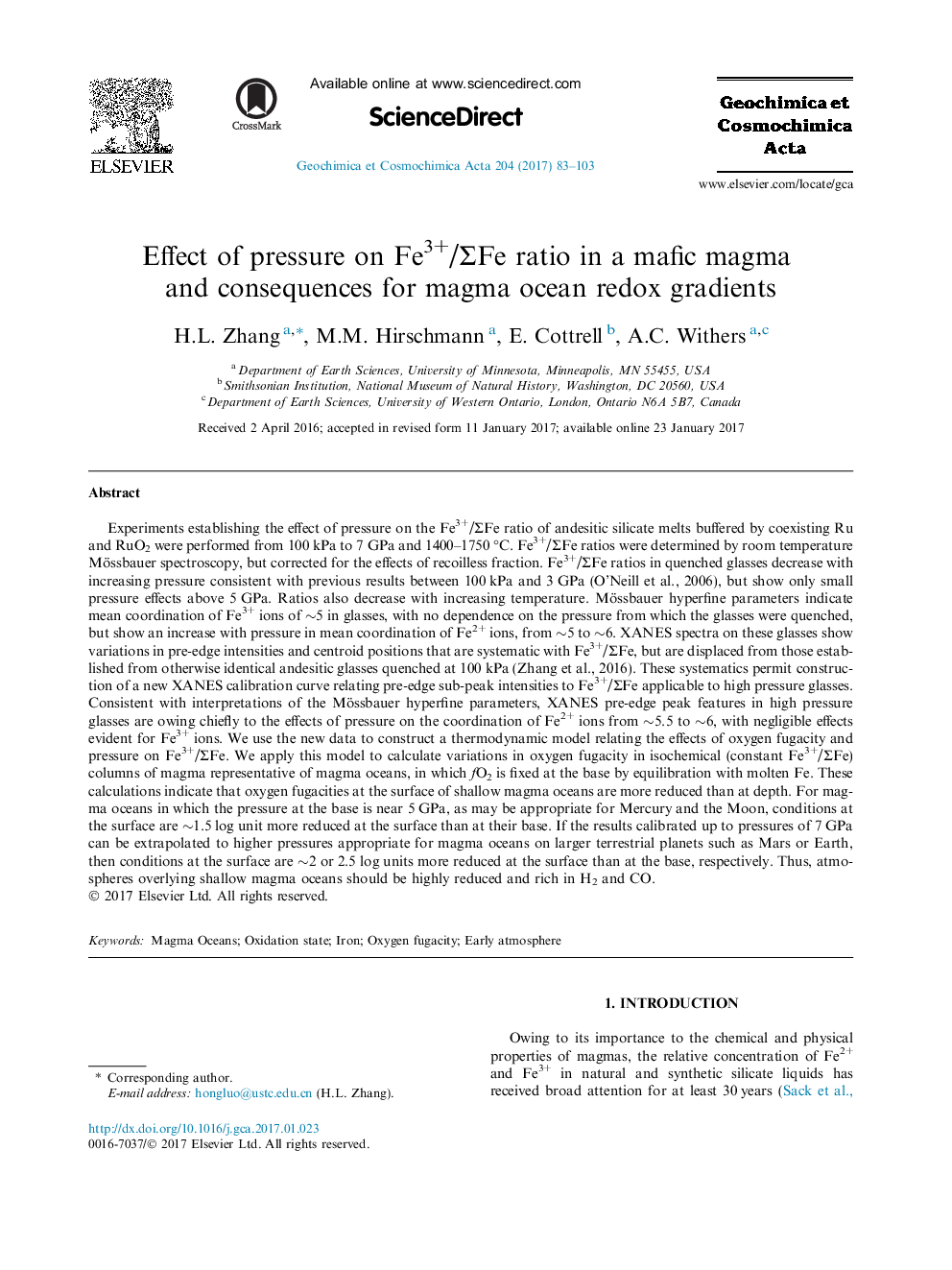| کد مقاله | کد نشریه | سال انتشار | مقاله انگلیسی | نسخه تمام متن |
|---|---|---|---|---|
| 5783540 | 1637953 | 2017 | 21 صفحه PDF | دانلود رایگان |

Experiments establishing the effect of pressure on the Fe3+/ΣFe ratio of andesitic silicate melts buffered by coexisting Ru and RuO2 were performed from 100 kPa to 7 GPa and 1400-1750 °C. Fe3+/ΣFe ratios were determined by room temperature Mössbauer spectroscopy, but corrected for the effects of recoilless fraction. Fe3+/ΣFe ratios in quenched glasses decrease with increasing pressure consistent with previous results between 100 kPa and 3 GPa (O'Neill et al., 2006), but show only small pressure effects above 5 GPa. Ratios also decrease with increasing temperature. Mössbauer hyperfine parameters indicate mean coordination of Fe3+ ions of â¼5 in glasses, with no dependence on the pressure from which the glasses were quenched, but show an increase with pressure in mean coordination of Fe2+ ions, from â¼5 to â¼6. XANES spectra on these glasses show variations in pre-edge intensities and centroid positions that are systematic with Fe3+/ΣFe, but are displaced from those established from otherwise identical andesitic glasses quenched at 100 kPa (Zhang et al., 2016). These systematics permit construction of a new XANES calibration curve relating pre-edge sub-peak intensities to Fe3+/ΣFe applicable to high pressure glasses. Consistent with interpretations of the Mössbauer hyperfine parameters, XANES pre-edge peak features in high pressure glasses are owing chiefly to the effects of pressure on the coordination of Fe2+ ions from â¼5.5 to â¼6, with negligible effects evident for Fe3+ ions. We use the new data to construct a thermodynamic model relating the effects of oxygen fugacity and pressure on Fe3+/ΣFe. We apply this model to calculate variations in oxygen fugacity in isochemical (constant Fe3+/ΣFe) columns of magma representative of magma oceans, in which fO2 is fixed at the base by equilibration with molten Fe. These calculations indicate that oxygen fugacities at the surface of shallow magma oceans are more reduced than at depth. For magma oceans in which the pressure at the base is near 5 GPa, as may be appropriate for Mercury and the Moon, conditions at the surface are â¼1.5 log unit more reduced at the surface than at their base. If the results calibrated up to pressures of 7 GPa can be extrapolated to higher pressures appropriate for magma oceans on larger terrestrial planets such as Mars or Earth, then conditions at the surface are â¼2 or 2.5 log units more reduced at the surface than at the base, respectively. Thus, atmospheres overlying shallow magma oceans should be highly reduced and rich in H2 and CO.
Journal: Geochimica et Cosmochimica Acta - Volume 204, 1 May 2017, Pages 83-103